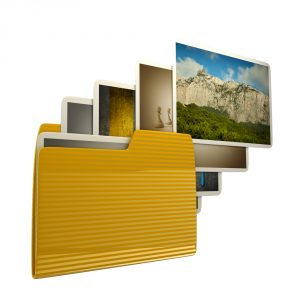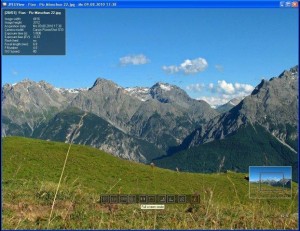 At first glance, JPEGview doesn’t appear as though it’s going to be a particularly interesting image viewer. A 798KB download suggests there can’t be too much power here. And on launch the program asks you to choose an image, and then just displays it, with no menus, toolbars or other obvious signs of any interface.
At first glance, JPEGview doesn’t appear as though it’s going to be a particularly interesting image viewer. A 798KB download suggests there can’t be too much power here. And on launch the program asks you to choose an image, and then just displays it, with no menus, toolbars or other obvious signs of any interface.
First impressions aren’t always reliable, though -- and you’ll quickly realize that as you begin to explore.
Touch the left and right cursor keys, for instance, and you’ll find you can browse through all the images in your chosen folder. There’s support for a reasonable range of file types, including some RAW formats: JPEG, BMP, PNG, TIFF, GIF, WEBP, WDP, HDP, JXR, PEF, DNG, CRW, NEF, CR2, MRW, RW2, ORF, X3F, KDC, NRW, DCR, SR2 and RAF. And JPEGView loads and processes them quickly, too, thanks to its support for SSE2 and multiple cores.
Move your mouse cursor over the image and a small control overlay appears, with some useful options. You can step backwards and forwards through images in the same folder, for instance; switch to a full screen or "actual size" view; rotate images by fixed increments or just by dragging the mouse; and there’s perspective correction, auto image enhancement, and a simple EXIF viewer.
JPEGView would be useful if it only did this -- but the program is just getting started. Move your mouse cursor below the control overlay and more options should fade into view (if they don’t, maximize the window and try again).
A collection of sliders allow you to tweak contrast, brightness, contrast, colors (CMY/ RGB); there are options to tweak your shadows and highlights, correct colors and contrast; there’s an Unsharp Mask option, and you can rename the image, too.
Still not impressed? Then right-click the image for even more. Like the option to display your images as a slideshow or movie (that is, at speeds of anything up to 100 per second); a complete batch file renamer/ copier; and a settings file which gives you more options, including the ability to extend JPEGView with other programs and custom commands.
 And even this isn’t the end. Pressing F1 reveals a list of more than 50 keyboard shortcuts covering every aspect of the program’s operation. And so if you’re unhappy with the way it cycles only through images in the current folder, for instance, you can press F8 to have the program browse through subfolders as well, or F9 to work through the current folder and its siblings (folders at the same level).
And even this isn’t the end. Pressing F1 reveals a list of more than 50 keyboard shortcuts covering every aspect of the program’s operation. And so if you’re unhappy with the way it cycles only through images in the current folder, for instance, you can press F8 to have the program browse through subfolders as well, or F9 to work through the current folder and its siblings (folders at the same level).
Despite all this power, JPEGView isn’t going to appeal to everyone. The fact that most of the program’s interface is entirely hidden is one issue, for instance. We quite like that -- it’s clean, stays out of your way, yet remains very easy to access -- but beginners may be confused.
And at the same time, you don’t get the same level of functionality here as, say, with IrfanView, so more experienced user might also have some complaints.
On balance, though, we think JPEGView is an excellent image viewer. After all, it’s well designed, crammed with features, highly configurable, tiny, portable and free -- and that works for us. So go check out a copy for yourself, see how it performs for you.
Photo Credit: Iaroslav Neliubov/Shutterstock

